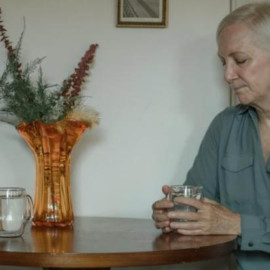 Last month, Justice Souter of the United States Supreme Court issued a unanimous decision in the case of Kennedy v. Plan Administrator for DuPont Savings and Investment Plan. A dispute had arisen between husband’s estate and his ex-wife over receipt of his Savings and Investment Plan proceeds. A SIP is an “employee pension benefit plan” similar to a 401(K) plan subject to federal ERISA laws. Early on in the marriage, husband had named his wife as the beneficiary to his employer’s SIP plan. The parties divorced and the divorce decree language said that the wife was “divested of all right, title, interest, and claim in and to . . . any and all sums . . . the proceeds [from], and any other rights related to . . . retirement plan, pension plan, or like benefit program existing by reason of [the husband’s] past, present or future employment.” However, the husband never executed a form to remove the wife as his beneficiary of the plan nor did he submit a Qualified Domestic Relations Order (QDRO) to the employer covering the SIP. He did, however, submit a QDRO covering his pension.
Last month, Justice Souter of the United States Supreme Court issued a unanimous decision in the case of Kennedy v. Plan Administrator for DuPont Savings and Investment Plan. A dispute had arisen between husband’s estate and his ex-wife over receipt of his Savings and Investment Plan proceeds. A SIP is an “employee pension benefit plan” similar to a 401(K) plan subject to federal ERISA laws. Early on in the marriage, husband had named his wife as the beneficiary to his employer’s SIP plan. The parties divorced and the divorce decree language said that the wife was “divested of all right, title, interest, and claim in and to . . . any and all sums . . . the proceeds [from], and any other rights related to . . . retirement plan, pension plan, or like benefit program existing by reason of [the husband’s] past, present or future employment.” However, the husband never executed a form to remove the wife as his beneficiary of the plan nor did he submit a Qualified Domestic Relations Order (QDRO) to the employer covering the SIP. He did, however, submit a QDRO covering his pension.
The husband passed away and the parties’ daughter requested that the employer pay the SIP benefits to the husband’s estate. The employer refused claiming that the provisions of the Employee Retirement Income Security Act of 1974 (ERISA) prohibiting benefits from being assigned or alienated, required payment to the ex-wife instead! After much litigation, the United States Supreme Court agreed with the Fifth Circuit Court of Appeals that the language in the divorce decree did not over-ride the specific requirements of the retirement plan document, which husband did not follow to remove his ex-wife as the beneficiary. The end result was that the $400,000 in his SIP account went to the ex-wife instead of his estate and children!
It is a common scenario that lawyers and divorce courts attempt to divide and allocate 401(k) and SIP accounts. This area of the law is fraught with many landmines and can be very complicated! So, to avoid unintended consequences, the rules of the plan, as well as the strict requirements of ERISA, must be complied with carefully. The most prudent course of action for people facing this type of situation is to contact the plan administrator to be certain that all required steps have been taken, which vary from plan to plan, including signing the change of beneficiary form and/or the issuance of a proper Qualified Domestic Relations Order (QDRO).
Source: Kennedy v. Plan Administrator for DuPont Savings and Investment Plan
© 2009, Ohio Family Law Blog. All rights reserved.

Attorney Robert “Chip” Mues has been focusing his legal practice throughout Southwest Ohio primarily in divorce and family law matters since 1978. Chip is passionate about family law and has proudly published the Ohio Family Law Blog since 2007. In addition, he previously managing the Dayton law firm of Holzfaster, Cecil, McKnight & Mues LPA until it dissolved on December 31, 2024. He recently has founded MUESLAW in 2025. To learn more about him or MUESLAW, visit www.MuesLaw.com. Appointments are available in person, over the phone or by Zoom. Call us at 937 293-2141.




Pingback:Ex-Wife Gets Former Huband’s 401(k) Savings And Investment Plan … | financialfreedom2
Pingback:Real Estate Information » Ex-Wife Gets Former Huband’s 401(k) Savings And Investment Plan …
Pingback:NOBEL LAUREATE AND PRINCETON PROFESSOR: GROWING SENSE OF PANIC OVER MR. OBAMA’S ECONOMIC DEEDS — But As For Me